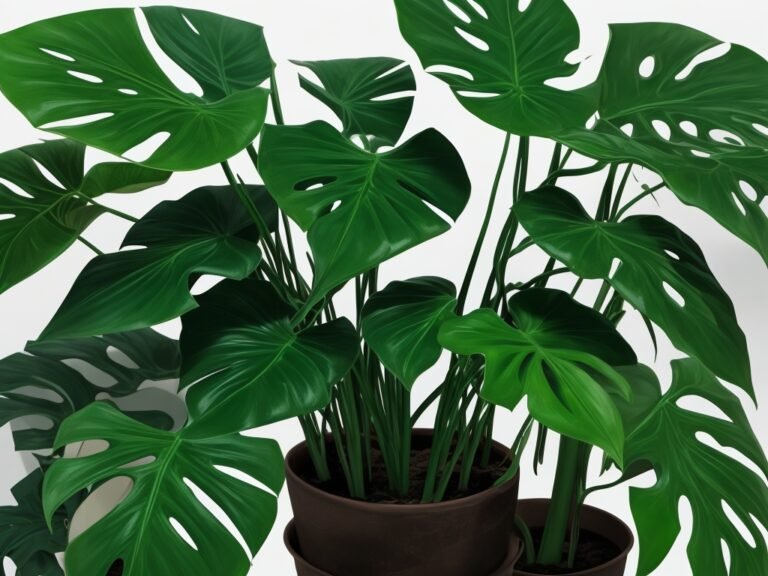What Temperature Is Too Cold For Monstera Houseplants?
Key Takeaways:
- Monstera houseplants can tolerate temperatures as low as 50°F (10°C), but anything below that can harm their growth.
- Consistently exposing Monstera plants to temperatures below 60°F (15°C) can cause leaf discoloration and stunted growth.
- It is important to keep Monstera houseplants in an environment with temperatures between 65°F to 85°F (18°C to 29°C) for optimal growth.
- Sudden temperature drops or cold drafts can shock Monstera plants, leading to leaf damage and slower growth.
Are you a proud parent of a Monstera houseplant? If so, you probably already know that creating the perfect conditions for these stunning plants is crucial for their well-being.
But what about temperature?
How do you know if it’s too cold for your Monstera? Well, fear not! In this article, we’ll dive deep into the world of Monstera houseplants and explore their ideal temperature requirements.
We’ll also discuss the signs of cold stress and how to protect your precious green friend from chilly temperatures.
So, let’s get started and ensure your Monstera thrives in any climate!
| Temperature Range (°F) | Effect on Monstera Houseplants |
| 60-70°F (15-21°C) | Ideal temperature range for Monstera houseplants to thrive |
| 50-60°F (10-15°C) | Monstera plants may experience slower growth |
| Below 50°F (Below 10°C) | Monstera plants may suffer from cold stress, leaf damage, and growth stunting |
| Above 75°F (Above 24°C) | Monstera plants may have reduced growth and experience leaf curling or browning |
Understanding Monstera Houseplants
Monstera houseplants are popular for their large, glossy leaves and tropical vibes.
Let’s dive into what makes these plants unique and how to care for them!
What is a Monstera Houseplant?
A Monstera houseplant, also known as a Swiss cheese plant, is a popular indoor plant with large, glossy leaves that have unique fenestrations (holes).
It is native to the tropical rainforests of Central and South America.
Monstera houseplants are known for their striking appearance and are loved for their ability to thrive indoors with minimal care.

Ideal Conditions for Monstera Houseplants
Ideal conditions for Monstera houseplants include bright, indirect sunlight.
They thrive in temperatures between 65-85°F (18-29°C).
Use well-draining soil and water consistently, allowing the top few inches to dry between watering.
Maintain humidity levels of 50-60%.
Regularly wipe the leaves to remove dust.
Temperature Requirements for Monstera Houseplants
Monstera houseplants have specific temperature requirements for optimal growth and health. The optimal temperature range for Monstera houseplants is between 65°F to 85°F (18°C to 29°C).
Monstera Houseplants and Temperature Tolerance
Monstera houseplants have a moderate temperature tolerance.
They thrive in temperatures between 65-85°F (18-29°C).
Temperatures below 50°F (10°C) can cause damage, while frost or below-freezing temperatures can be fatal.
Keep your Monstera in a warm, draft-free spot, away from cold windows or doorways.
If your area experiences cold winters, consider insulating with blankets or moving your plant indoors.
Optimal Temperature Range for Monstera Houseplants
Monstera houseplants thrive in temperatures ranging from 65 to 85 degrees Fahrenheit (18 to 29 degrees Celsius). This temperature range provides the ideal conditions for the plant’s growth and development.
Outside of this range, the plant may suffer from stress and show symptoms such as stunted growth or yellowing leaves.
It’s important to maintain a consistent temperature within this range to ensure the health and well-being of your Monstera houseplant.
Signs of Cold Stress in Monstera Houseplants
Signs of cold stress in Monstera houseplants can include wilting, leaf discoloration, and leaf drop.
How Cold Temperatures Affect Monstera Houseplants
Cold temperatures can have a negative impact on Monstera houseplants.
Exposure to cold air or frost can cause damage to the leaves, resulting in discoloration, browning, and even leaf drop.
Cold stress can also weaken the plant’s immune system, making it more susceptible to pests and diseases.
It’s important to protect your Monstera from extreme cold by providing adequate insulation and keeping it in a suitable location.

Symptoms of Cold Stress in Monstera Houseplants
Signs of cold stress in Monstera houseplants include wilting leaves, yellowing or browning of foliage, leaf drop, and stunted growth. Other symptoms may include blackened or softened stems and a general decline in overall plant health.
It’s important to protect your Monstera from cold temperatures to avoid these issues.
Protecting Monstera Houseplants from Cold Temperatures
To protect your Monstera houseplants from cold temperatures, choose the right location and use insulation methods.
Using Insulation Methods to Protect Monstera Houseplants
To protect Monstera houseplants from cold temperatures, you can use insulation methods. One effective method is to wrap the plant in burlap or frost cloth to provide a layer of protection.
You can also place the plant near a heat source, like a radiator, or use a space heater to keep the temperature stable.
Additionally, moving the plant away from drafty windows or doors can help protect it from cold air.
Frequently Asked Questions
What is the Coldest Temperature Monstera Houseplants Can Withstand?
Monstera houseplants can withstand temperatures as low as 50°F (10°C), but they prefer temperatures between 65°F-85°F (18°C-29°C). Anything below 50°F (10°C) can cause damage to the plant, including leaf discoloration and wilting.
It’s best to keep your Monstera in a warm and consistent environment to ensure its health and vitality.
Can Monstera Houseplants Survive in Cold Climates?
Monstera houseplants are tropical plants that thrive in warm and humid environments.
While some varieties can tolerate lower temperatures for short periods, they generally cannot survive in cold climates.
Exposure to cold temperatures can damage the leaves and stunts growth.
It’s best to keep your Monstera houseplant in a warm and protected location, away from drafts or frost.
If you live in a cold climate, consider growing your Monstera indoors or providing extra insulation during colder months to protect it from the cold.
How to Revive a Monstera Houseplant After Cold Damage
To revive a Monstera houseplant after cold damage, start by bringing it to a warmer location with consistent temperatures. Remove any damaged or yellow leaves, but avoid pruning too much at once.
Increase humidity by misting the plant and placing a tray of water nearby.
Water thoroughly, but let the soil dry slightly between waterings. Consider using a diluted fertilizer to promote new growth.
Be patient and give the plant time to recover.
Final Verdict
Understanding the temperature requirements of Monstera houseplants is crucial for their health and survival.
These tropical plants thrive in temperatures between 65°F and 85°F, with higher temperatures being more ideal.
Cold temperatures below 50°F can cause significant stress and damage to Monstera plants, leading to stunted growth, leaf discoloration, and even death.
It is important to choose the right location for your Monstera plant and provide insulation during colder months to protect them from freezing temperatures.
By providing the optimal temperature conditions, you can ensure the vitality and beauty of your Monstera houseplants for years to come.






